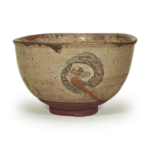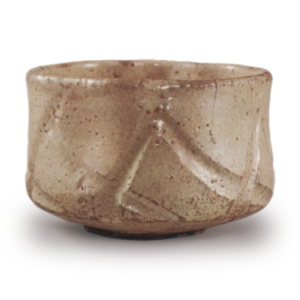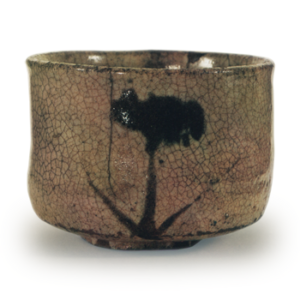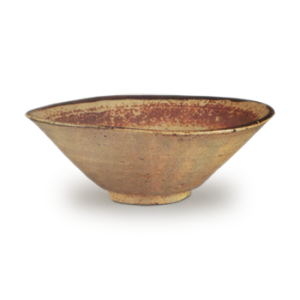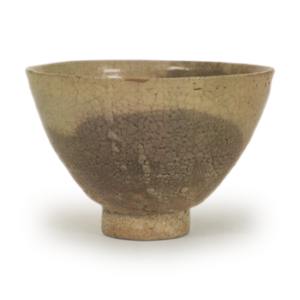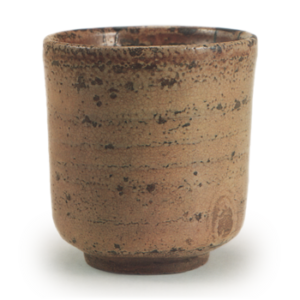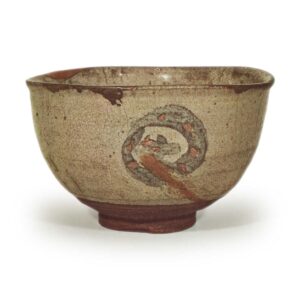
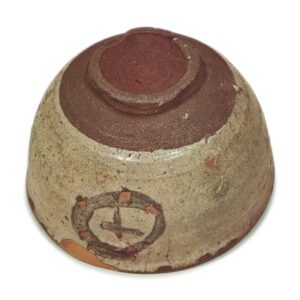
Collection: Idemitsu Museum of Arts
Height: 8.7-9.0cm
Diameter: 13.5-14.1cm
Foot diameter: 5.6cm
Height: 0.8-1.0cm
This is an excellent picture Karatsu tea bowl, with a thick brush stroke depicting a cross within a circle on the body.
The clay is a rough clay mixed with small grains of sand, and it has been fired well, hardening the clay. There is a slight iron content, which has turned a light brown color from burning, and it has become darker from being stained with tea stains. It is covered in a translucent white glaze, and there are cracks all over the surface. The rim is decorated with iron pigment, and it is commonly referred to as a “skin whale”. On both sides of the body, there are circles with crosses drawn in iron pigment, and the translucent glaze that has melted halfway through is nice to look at when seen through.
The rim is slightly convex, the body is bowl-shaped and full, and it has a low, sturdy foot. There is a shallow cutout on the underside of the base, and the body is exposed below the waist. This shape is relatively common in Karatsu ware, and there are many examples decorated with various patterns, but this is the only example of a body decorated with a circle and cross that we know of, and it is a rare example. This is one of the outstanding tea bowls in the category of painted Karatsu ware, and is one of the most memorable of the many examples of painted Karatsu ware.
It is thought to have been made in the Doen kiln at the southern foot of Mt. Kishidake around the Keicho and Genna periods, but of course, this cannot be confirmed.
It was originally made as a daily rice bowl, and because it was used so much, there are several large frayed areas around the rim, which have been mended with gold. There are also five or six thin gutters around the rim, but they are not very noticeable.
Idemitsu Sazo is known as a collector of old Karatsu ware, and it seems that no one else has as many pieces of Karatsu ware as he does. He became fond of Karatsu ware after he acquired this bowl with a circle and cross design and was struck by its beauty, and it is said that this bowl is one that holds a special place in his memory.
The Karatsu collection at the Idemitsu Museum of Arts began with this tea bowl, and it is a tea bowl of great significance.

